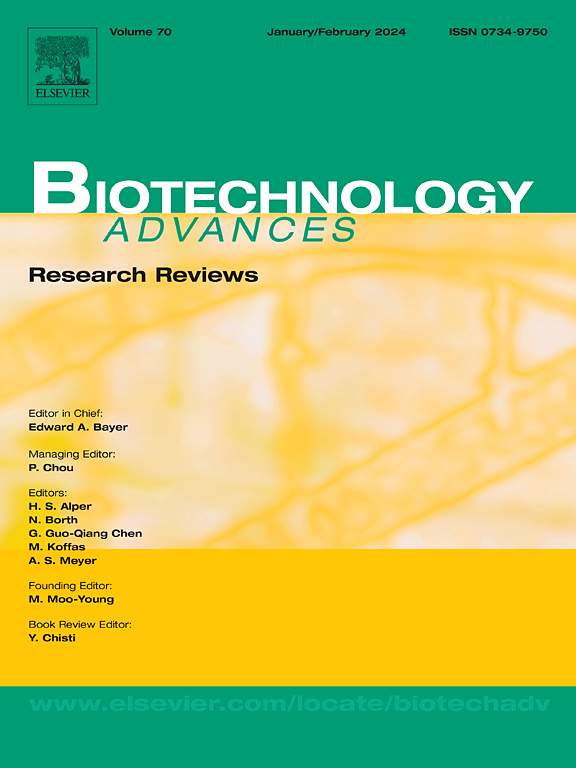放大生物催化系统的过程模拟和评估:进展、挑战和未来展望。
IF 12.1
1区 工程技术
Q1 BIOTECHNOLOGY & APPLIED MICROBIOLOGY
引用次数: 0
摘要
随着对生物基产品需求的增加和生物制造技术的快速发展,包括微生物和酶在内的生物催化反应已成为前景广阔的方法。在扩大生产工艺规模之前,环境和经济可行性分析对于在工业 4.0 背景下发展可持续的智能生物经济至关重要。为实现这些目标,工艺模拟可支持系统优化,提高能源和资源利用效率,并支持数字化生物工艺。然而,由于对细胞新陈代谢和相互作用机制的认识不足,目前仍缺乏合理、透明的模拟工具来有效模拟、控制和优化微生物/酶反应过程。因此,亟需为生物反应模拟及其优化开发集成动力学建模、过程模拟和可持续性分析的框架。本综述总结并比较了不同过程模拟软件和模型在模拟生物催化过程中的优缺点,指出了传统反应动力学模型的局限性,并提出了模拟接近真实反应的要求。此外,我们还探讨了微观尺度动力学建模的现状,以及如何将过程模拟与细胞代谢动力学模型和计算流体动力学模型联系起来。最后,本综述讨论了敏感性分析的要求,以及机器学习如何从技术经济和生命周期评估的角度协助优化模拟,以提高能效和产品产量。本文章由计算机程序翻译,如有差异,请以英文原文为准。
Process simulation and evaluation of scaled-up biocatalytic systems: Advances, challenges, and future prospects
With the increased demand for bio-based products and the rapid development of biomanufacturing technologies, biocatalytic reactions including microorganisms and enzyme based, have become promising approaches. Prior to the scale-up of production process, environmental and economic feasibility analysis are essential for the development of a sustainable and intelligent bioeconomy in the context of industry 4.0. To achieve these goals, process simulation supports system optimization, improves energy and resource utilization efficiencies, and supports digital bioprocessing. However, due to the insufficient understanding of cellular metabolism and interaction mechanisms, there is still a lack of rational and transparent simulation tools to efficiently simulate, control, and optimize microbial/enzymatic reaction processes. Therefore, there is an urgent need to develop frameworks that integrate kinetic modeling, process simulation, and sustainability analysis for bioreaction simulations and their optimization. This review summarizes and compares the advantages and disadvantages of different process simulation software and models in simulating biocatalytic processes, identifies the limitations of traditional reaction kinetics models, and proposes the requirement of simulations close to real reactions. In addition, we explore the current state of kinetic modeling at the microscopic scale and how process simulation can be linked to kinetic models of cellular metabolism and computational fluid dynamics modeling. Finally, this review discusses the requirement of sensitivity analysis and how machine learning can assist with optimization of simulations to improve energy efficiency and product yields from techno-economic and life cycle assessment perspectives.
求助全文
通过发布文献求助,成功后即可免费获取论文全文。
去求助
来源期刊

Biotechnology advances
工程技术-生物工程与应用微生物
CiteScore
25.50
自引率
2.50%
发文量
167
审稿时长
37 days
期刊介绍:
Biotechnology Advances is a comprehensive review journal that covers all aspects of the multidisciplinary field of biotechnology. The journal focuses on biotechnology principles and their applications in various industries, agriculture, medicine, environmental concerns, and regulatory issues. It publishes authoritative articles that highlight current developments and future trends in the field of biotechnology. The journal invites submissions of manuscripts that are relevant and appropriate. It targets a wide audience, including scientists, engineers, students, instructors, researchers, practitioners, managers, governments, and other stakeholders in the field. Additionally, special issues are published based on selected presentations from recent relevant conferences in collaboration with the organizations hosting those conferences.
 求助内容:
求助内容: 应助结果提醒方式:
应助结果提醒方式:


